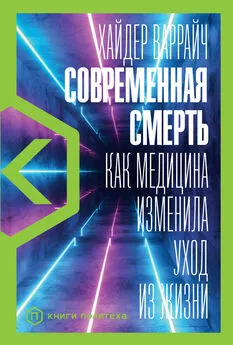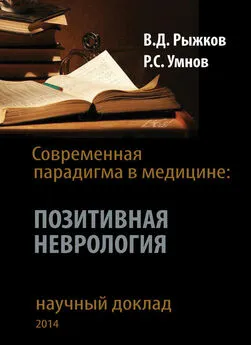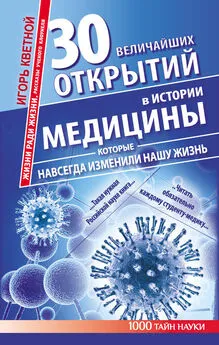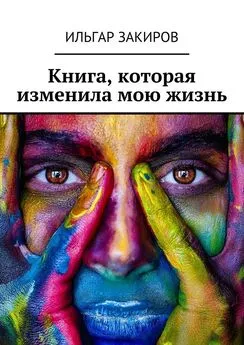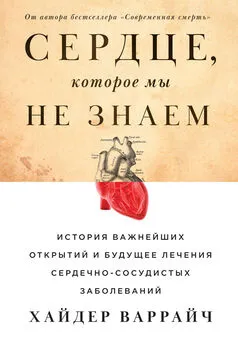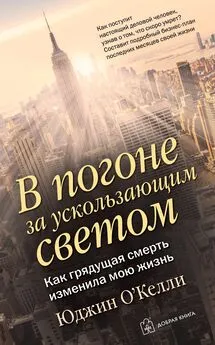Хайдер Варрайч - Современная смерть. Как медицина изменила уход из жизни
- Название:Современная смерть. Как медицина изменила уход из жизни
- Автор:
- Жанр:
- Издательство:Альпина нон-фикшн
- Год:2021
- Город:Москва
- ISBN:978-5-0013-9427-3
- Рейтинг:
- Избранное:Добавить в избранное
-
Отзывы:
-
Ваша оценка:
Хайдер Варрайч - Современная смерть. Как медицина изменила уход из жизни краткое содержание
По сравнению с серединой XX столетия радикально изменились все аспекты окончания нашей жизни — от чего мы умираем, когда умираем, где умираем и как умираем. В результате прогресса медицинской науки и медицинских технологий даже само определение смерти теперь формулируется иначе — что уж говорить о ее экологии, эпидемиологии, экономике и этике. Американская медицина прошла за это время огромный путь освоения новых подходов к смерти и умирающим — путь, на который в некоторых отношениях еще только предстоит вступить России. В своей дебютной книге доктор Варрайч рассказывает о сегодняшних ритуалах смерти и о ее современном языке — и на основе своего опыта лечащего врача в отделении интенсивной терапии крупной американской больницы задумывается о том, что лучше получалось у наших предков и в чем мы явно превзошли их.
Современная смерть. Как медицина изменила уход из жизни - читать онлайн бесплатно ознакомительный отрывок
Интервал:
Закладка:
304
Morgan PD, Fogel J, Rose L, Barnett K, Mock V, Davis BL, et al. African American couples merging strengths to successfully cope with breast cancer. Oncol Nurs Forum . 2005; 32 (5): 979-87.
305
Okon TR. Spiritual, religious, and existential aspects of palliative care. J Palliat Med . 2005; 8 (2): 392–414.
306
Balboni TA, Vanderwerker LC, Block SD, Paulk ME, Lathan CS, Peteet JR, et al. Religiousness and spiritual support among advanced cancer patients and associations with end-of-life treatment preferences and quality of life. J Clin Oncol . 2007; 25 (5): 555-60; True G, Phipps EJ, Braitman LE, Harralson T, Harris D, Tester W. Treatment preferences and advance care planning at end of life: the role of ethnicity and spiritual coping in cancer patients. Ann Behav Med . 2005; 30 (2): 174-79; Johnson KS, Elbert-Avila KI, Tulsky JA. The influence of spiritual beliefs and practices on the treatment preferences of African Americans: a review of the literature. J Am Geriatr Soc . 2005; 53 (4): 711-19.
307
Phelps AC, Maciejewski PK, Nilsson M, Balboni TA, Wright AA, Paulk ME, et al. Religious coping and use of intensive life-prolonging care near death in patients with advanced cancer. JAMA . 2009; 301 (11): 1140-47.
308
Powell LH, Shahabi L, Thoresen CE. Religion and spirituality. linkgges to physical health. Am Psychol . 2003; 58 (1): 36–52.
309
PRRI, Pre-Election American Values Survey. publicreligion.org/research/2012/10/american-values-survey-2012/. 2012.
310
Phelps et al., Religious coping.
311
Jacobs LM, Burns K, Bennett Jacobs B. Trauma death: views of the public and trauma professionals on death and dying from injuries. Arch Surg . 2008; 143 (8): 730-35.
312
Silvestri GA, Knittig S, Zoller JS, Nietert PJ. Importance of faith on medical decisions regarding cancer care. J Clin Oncol . 2003; 21 (7): 1379-82.
313
BBC. Mother dies after refusing blood. news.bbc.co.uk/2/hi/uk_news/england/shropshire/7078455.stm. 2007.
314
Tulsky JA, Chesney MA, Lo B. How do medical residents discuss resuscitation with patients? J Gen Intern Med . 1995; 10 (8): 436-42.
315
Engelhardt HT Jr, Iltis AS. End-of-life: the traditional Christian view. Lancet . 2005; 366 (9490): 1045-49.
316
Pope Pius XII, The Prolongation of Life [see «How We Learned Not to Resuscitate», note 39].
317
Pope John Paul II (1995) Evangelium Vitae, March 25, www.vatican.va.
318
Unitarian Universalist Association. The Right to Die with Dignity. 1988 General Resolution. www.uua.org/statements/statements/14486.shtml.
319
The Holy Synod of the Church of Greece, Bioethics Committee (2000) Press release, August 17. Basic positions on the ethics of transplantation and euthanasia. www.bioethics.org.gr.
320
Steinberg A, Sprung CL. The dying patient: new Israeli legislation. Intensive Care Med . 2006; 32 (8): 1234-7; Weiss RB. Pain management at the end of life and the principle of double effect: a Jewish perspective. Cancer Invest . 2007; 25 (4): 274-47.
321
Rappaport ZH, Rappaport IT. Brain death and organ transplantation: concepts and principles in Judaism. Adv Exp Med Biol . 2004; 550: 133-37.
322
Dorff EN. End-of-life: Jewish perspectives. Lancet . 2005; 366 (9488): 862-65.
323
Dorff, End-of-life.
324
Dorff, End-of-life.
325
Foreign Policy. The List: The world’s fastest growing religions. www.foreignpolicy.com/articles/2007/05/13/the_list_the_worlds_fastest_growing_religions. May 2007.
326
Crabtree S. Gallup World. Religiosity highest in world’s poorest nations. www.gallup.com/poll/142727/religiosity-highest-world-poorest-nations.aspx-1. August 31, 2010.
327
Padela AI, Arozullah A, Moosa E. Brain death in Islamic ethico-legal deliberation: challenges for applied Islamic bioethics. Bioethics . 2013; 27 (3): 132-39.
328
Baeke G, Wils JP, Broeckaert B. «Be patient and grateful» — elderly Muslim women’s responses to illness and suffering. J Pastoral Care Counsel . 2012; 66 (3–4): 5.
329
Banning M, Hafeez H, Faisal S, Hassan M, Zafar A. The impact of culture and sociological and psychological issues on Muslim patients with breast cancer in Pakistan. Cancer Nurs . 2009; 32 (4): 317-24.
330
Dein S, Swinton J, Abbas SQ. Theodicy and end-of-life care. J Soc Work End Life Palliat Care . 2013; 9 (2–3): 191–208.
331
Pew Research Center. Religious groups’ views on end-of-life issues. November 2013.
332
da Costa DE, Ghazal H, Al Khusaiby S. Do Not Resuscitate orders and ethical decisions in a neonatal intensive care unit in a Muslim community. Arch Dis Child Fetal Neonatal Ed . 2002; 86 (2): F115-9; Ebrahim AF. The living will (Wasiyat Al-Hayy): a study of its legality in the light of Islamic jurisprudence. Med Law . 2000; 19 (1): 147-60.
333
Gupta R. Death beliefs and practices from an Asian Indian American Hindu perspective. Death Stud . 2011; 35 (3): 244-66.
334
Firth S. End-of-life: a Hindu view. Lancet . 2005; 366 (9486): 682-86.
335
Desai PN. Medical ethics in India. J Med Philos . 1988; 13 (3): 231-55.
336
McClain-Jacobson C, Rosenfeld B, Kosinski A, Pessin H, Cimino JE, Breitbart W. Belief in an afterlife, spiritual well-being and end-of-life despair in patients with advanced cancer. Gen Hosp Psychiatry . 2004; 26 (6): 484-86.
337
Matsumura S, Bito S, Liu H, Kahn K, Fukuhara S, Kagawa-Singer M, et al. Acculturation of attitudes toward end-of-life care: a cross-cultural survey of Japanese Americans and Japanese. J Gen Intern Med . 2002; 17 (7): 531-39.
338
Pirutinsky S, Rosmarin DH, Pargament KI, Midlarsky E. Does negative religious coping accompany, precede, or follow depression among Orthodox Jews? J Affect Disord . 2011; 132 (3): 401-5.
339
Pearson SD, Goldman L, Orav EJ, Guadagnoli E, Garcia TB, Johnson PA, et al. Triage decisions for emergency department patients with chest pain: do physicians’ risk attitudes make the difference? J Gen Intern Med . 1995; 10 (10): 557-64.
340
Pines JM, Hollander JE, Isserman JA, Chen EH, Dean AJ, Shofer FS, et al. The association between physician risk tolerance and imaging use in abdominal pain. Am J Emerg Med . 2009; 27 (5): 552-7.
341
Bensing J, Schreurs K, De Rijk AD. The role of the general practitioner’s affective behaviour in medical encounters. Psychology and Health . 1996; 11 (6): 825-38.
342
Geller SE, Burns LR, Brailer DJ. The impact of nonclinical factors on practice variations: the case of hysterectomies. Health Serv Res . 1996; 30 (6): 729-50.
343
Curlin FA, Lantos JD, Roach CJ, Sellergren SA, Chin MH. Religious characteristics of U. S. physicians: a national survey. J Gen Intern Med . 2005; 20 (7): 629-34.
344
Curlin FA, Sellergren SA, Lantos JD, Chin MH. Physicians’ observations and interpretations of the influence of religion and spirituality on health. Arch Intern Med . 2007; 167 (7): 649-54.
345
Curlin FA, Chin MH, Sellergren SA, Roach CJ, Lantos JD. The association of physicians’ religious characteristics with their attitudes and self-reported behaviors regarding religion and spirituality in the clinical encounter. Med Care . 2006; 44 (5): 446-53.
346
Curlin et al., Physicians’ observations.
347
Wenger NS, Carmel S. Physicians’ religiosity and end-of-life care attitudes and behaviors. Mt Sinai J Med . 2004; 71 (5): 335-43.
348
Curlin FA, Nwodim C, Vance JL, Chin MH, Lantos JD. To die, to sleep: US physicians’ religious and other objections to physician-assisted suicide, terminal sedation, and withdrawal of life support. Am J Hosp Palliat Care . 2008; 25 (2): 112-20.
349
Cohen J, van Delden J, Mortier F, Lofmark R, Norup M, Cartwright C, et al. Influence of physicians’ life stances on attitudes to end-of-life decisions and actual end-of-life decision-making in six countries. J Med Ethics . 2008; 34 (4): 247-53.
350
Asch DA, DeKay ML. Euthanasia among US critical care nurses. Practices, attitudes, and social and professional correlates. Med Care . 1997; 35 (9): 890–900.
351
Sprung CL, Maia P, Bulow HH, Ricou B, Armaganidis A, Baras M, et al. The importance of religious affiliation and culture on end-of-life decisions in European intensive care units. Intensive Care Med . 2007; 33 (10): 1732-39.
352
Romain M, Sprung CL. End-of-life practices in the intensive care unit: the importance of geography, religion, religious affiliation, and culture. Rambam Maimonides Med J . 2014; 5 (1): e0003.
353
Tierney E, Kauts V. «Do Not Resuscitate» (DNR) policies in the ICU — the time has come for openness and change. Bahrain Medical Bulletin . 2014; 36 (2).
354
Saeed F, Kousar N, Aleem S, Khawaja O, Javaid A, Siddiqui MF, et al. End-of-life care beliefs among Muslim physicians. Am J Hosp Palliat Care . 2014.
355
MacLean CD, Susi B, Phifer N, Schultz L, Bynum D, Franco M, et al. Patient preference for physician discussion and practice of spirituality. J Gen Intern Med . 2003; 18 (1): 38–43.
356
Monroe MH, Bynum D, Susi B, Phifer N, Schultz L, Franco M, et al. Primary care physician preferences regarding spiritual behavior in medical practice. Arch Intern Med . 2003; 163 (22): 2751-56.
357
MacLean et al., Patient preference.
358
Ellis MR, Vinson DC, Ewigman B. Addressing spiritual concerns of patients: family physicians’ attitudes and practices. J Fam Pract . 1999; 48 (2): 105-9.
359
Luckhaupt SE, Yi MS, Mueller CV, Mrus JM, Peterman AH, Puchalski CM, et al. Beliefs of primary care residents regarding spirituality and religion in clinical encounters with patients: a study at a midwestern U. S. teaching institution. Acad Med . 2005; 80 (6): 560-70.
360
Balboni TA, Paulk ME, Balboni MJ, Phelps AC, Loggers ET, Wright AA, et al. Provision of spiritual care to patients with advanced cancer: associations with medical care and quality of life near death. J Clin Oncol . 2010; 28 (3): 445-52.
Читать дальшеИнтервал:
Закладка:
